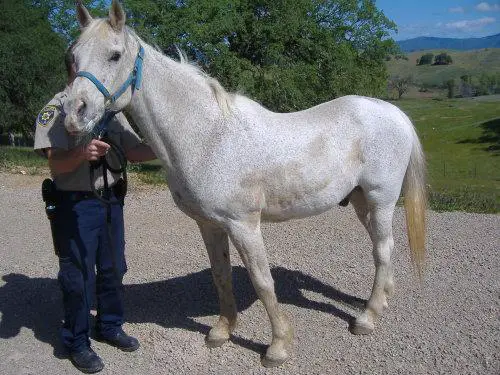- Elizabeth Larson
- Posted On
Foreclosures continue to rise across the nation, state, county
LAKE COUNTY – The loss of homes to foreclosure across the United States, California and Lake County is showing no signs of slowing, and local Realtors are warning of another wave of foreclosed homes that is about to come onto the market.
The latest news from Irvine-based RealtyTrac shows that foreclosure activity nationwide increased 9 percent in the first quarter of this year over the fourth quarter of 2008, and was up 24 percent from the first quarter of 2008.
In all, there were 803,489 properties – or one home in every 159 homes across the United States – that had some sort of foreclosure filing against them, whether it be default notices, auction sale notices and bank repossessions, in the first three months of this year.
The report noted that March foreclosure activity was up 17 percent over February, and 46 percent over March of 2008.
In Lake County, there were 662 foreclosure filings in the first quarter, up 68 percent from the 393 filings in 2008's fourth quarter, and a rise of 108 percent from the 318 filings in the first quarter of 2008, according to numbers RealtyTrac provided to Lake County News.
The actual number of Lake County homes repossessed by banks was 125 in the first quarter, up from 68 in the same period in 2008, but down from 136 in the fourth quarter of last year.
James J. Saccacio, chief executive officer of RealtyTrac, said they saw a record level of foreclosure activity in March, more than 12 percent higher than the next highest month on record.
“Since much of this activity was in new foreclosure actions, it suggests that many lenders and
servicers were holding off on executing foreclosures due to industry moratoria and legislative delays,” Saccacio said.
He said it's also likely that the drop in bank repossession activity can attributed to these processing delays, rather than to any of the prevention programs currently in place.
Saccacio added that it’s very likely that the number of bank repossessions will increase again now that most of the moratoria have been lifted.
The top 10 states for foreclosures during the first quarter of 2009 were, in order, California, Florida, Arizona, Nevada, Illinois, Michigan, Ohio, Georgia, Texas and Virginia.
RealtyTrac said that California accounted for nearly 29 percent of the nation's total filings for the first quarter of this year, with 230,915 properties receiving foreclosure filings.
California's foreclosure activity increased 35 percent from the previous quarter and 36 percent from 2008's first quarter.
Local Realtors report on trends
Anita McKee, president of the Lake County Association of Realtors, said Realtors are continuing to see a lot of activity.
“The foreclosure market is really bad at the moment,” she said. “Some of the agents are getting four a day, every day.”
McKee said they're hearing that the banks are holding back on another group of foreclosures set to come onto the market until the current foreclosure are sold and cleared.
“We're expecting a lot more to come,” said McKee.
Some areas of the county are being hit especially hard, including the Clear Lake Riviera, where McKee said some homes are selling for 40 and 50 percent less than they would ave in 2006.
With those drops in value, it's very hard for homeowners who are not in foreclosure to get their money out of the homes, said McKee.
That's when they try short sales. McKee said the banks are being more cooperative when it comes to accepting offers for less than the amount that is owed. She said the bigger banks, such as Chase, are attempting to work with homeowners.
McKee said there are a lot of opportunities for buyers, including Federal Housing Administration loan programs and the new $18,000 tax credit for first-time homebuyers or anyone who hasn't bought a home in the last three years. There also is an increase in lease-option purchases, which allow prospective buyers to build up their credit.
Lots and land aren't moving, and few builders are building new homes, said McKee, whose business deals with high-end properties. She said the high-end market hasn't been greatly impacted; she recently closed a sale on a $1.3 million lakefront home.
Many investors are buying up homes under $200,000, but homes in the $300,000 to $500,000 range aren't moving, said McKee.
Clearlake Realtor Dave Hughes, who is focusing on foreclosures in the south county, said he's seen a small spike in the number of foreclosure listings, and is expecting to see more foreclosures coming onto the market in the next 30 to 60 days.
Hughes said he believes Hidden Valley Lake is the most active area in Lake County for foreclosures. “It saw the best surge in values when things were good.”
Over the last six to eight months, there have been about 105 active listings in Hidden Valley Lake, said Hughes. As of last Thursday, 50 of those were in escrow.
“That's huge,” he said. “It was running around 30.”
He estimated about 70 percent of the foreclosed homes he's listing are vacant, with the remaining 30 percent having the owner or tenants.
“We will pay people to move,” he said.
Depending the company – with Fannie Mae paying the highest amounts – tenants or owners could receive between $1,000 to $4,000 to move within 30 days.
Hughes said he's seeing the average sales price decline, which has led to a lot of sales activity, particularly in the Hidden Valley Lake area. That's aided by low interest rates for buyers.
“If it's the right price when it hits the market, you’ll see multiple offers,” Hughes said.
Hughes said he recently listed a five-acre property with a modular home for $173,000; by the next day he had three offers. In Riviera West, he valued a foreclosed home at $195,000, but the bank's asset manager asked him to drop the sales price, which he did, to $175,000. He received six offers and it's now in escrow for $200,000.
He said he's seeing loan options for prospective buyers including a 100-percent US Department of Agriculture loan and FHA loans with 3.5 percent down. He added that he's seeing a lot more of the latter.
“It’s a good time to buy,” said Hughes. “Even if things go down a lite more, you’re not going to get hurt that bad.”
E-mail Elizabeth Larson at This email address is being protected from spambots. You need JavaScript enabled to view it. .












